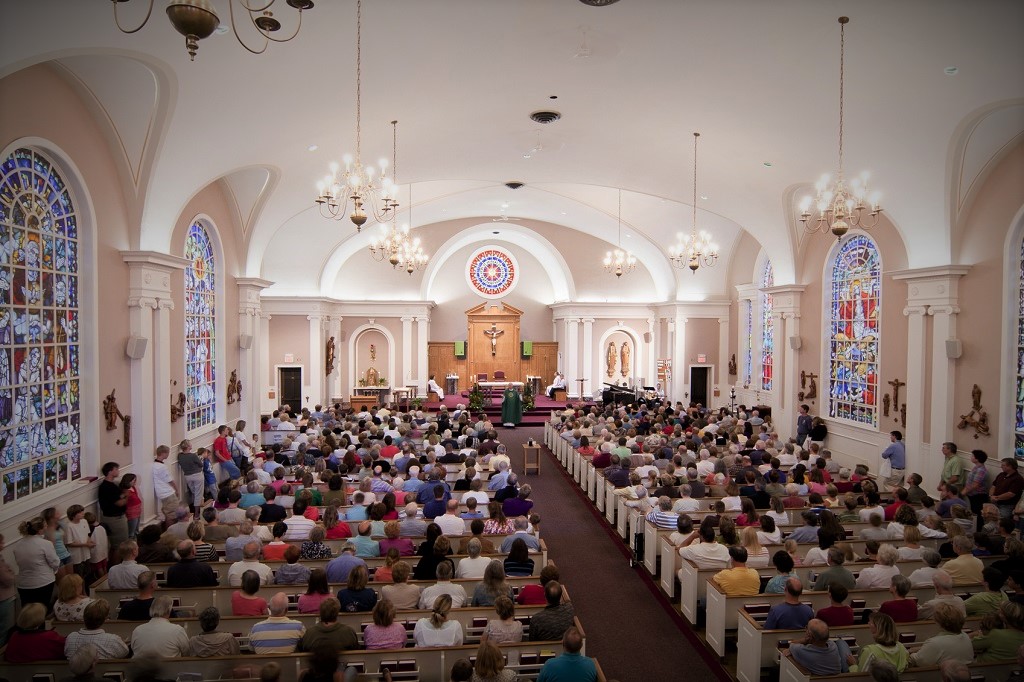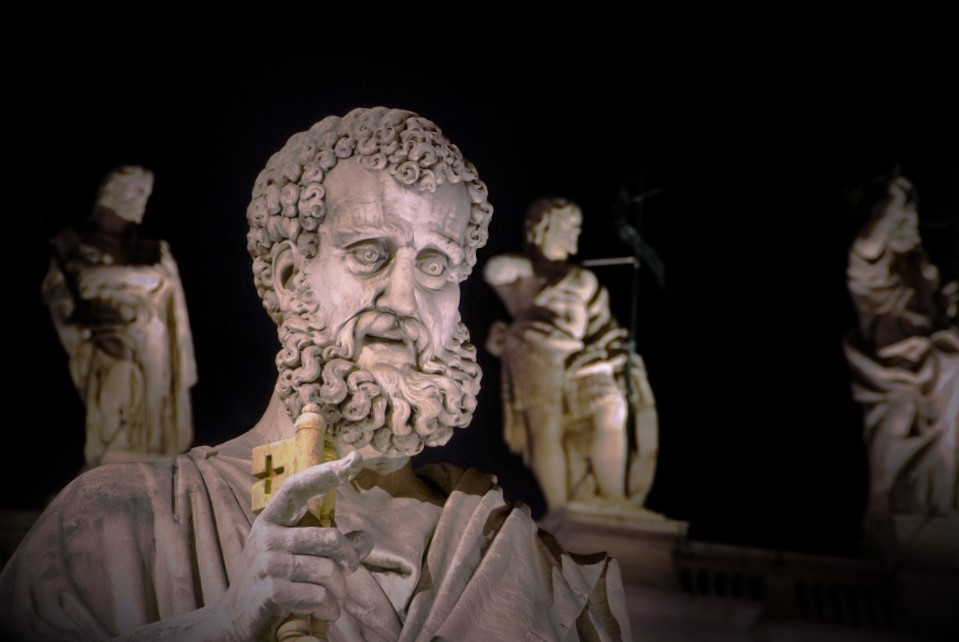Did you know that the Mass is a prayer? It’s not a bunch of prayers stuck together in some sort of mystical way every day, every Sunday. It is the prayer of God’s people, stretching back two millennia. The very earliest Christians gathered to share God’s word and celebrate the Eucharist, as Christ told his Apostles to do at the Last Supper. There are two billion Catholics throughout the world who pray together, entering into the Mystery of the Mass every day.
The Mass consists of two parts: the Liturgy of the Word and the Liturgy of the Eucharist. We believe that Christ is present in both, but in distinct ways.
The Mass is full of signs and symbols. We pray with our entire bodies, through gestures and postures. We are surrounded by music, images and art. All of these have meaning, and enrich the prayerful atmosphere. However, the Mass is the same whether it is celebrated in the most humble of chapels, on the back of a jeep with soldiers gathered about, or in St. Peter’s Basilica.
United States Conference of Catholic Bishops (USCCB) says this about the Liturgy of the Word:
In the Liturgy of the Word, the Church feeds the people of God from the table of his Word …. The Scriptures are the word of God, written under the inspiration of the Holy Spirit. In the Scriptures, God speaks to us, leading us along the path to salvation.
The Responsorial Psalm is sung between the readings. The psalm helps us to meditate on the word of God.
The high point of the Liturgy of the Word is the reading of the Gospel. Because the Gospels tell of the life, ministry, and preaching of Christ, it receives several special signs of honor and reverence. The gathered assembly stands to hear the Gospel and it is introduced by an acclamation of praise. Apart from Lent, that acclamation is “Alleluia,” derived from a Hebrew phrase meaning “Praise the Lord!” A deacon (or, if no deacon is present, a priest) proclaims the Gospel.
Either a deacon or priest may give the homily, which is meant to be a reflection on the Word of God that was just proclaimed, and should educate and edify the congregation.
Following the homily, there should be a short period of silence for reflection. Then the Nicene Creed is proclaimed (or in some circumstances, the Apostles’ Creed). This is the declaration of our faith and beliefs as Christians, both as individuals and a community.
The Liturgy of the Word concludes with the Prayer of the Faithful. These prayers, while unique for every congregation, are meant to follow a rubric: prayers for the Universal church, for public matters and global concerns, for those afflicted or burdened, the local community and for the dead.
On Wednesday, we will look at the Liturgy of the Eucharist.


